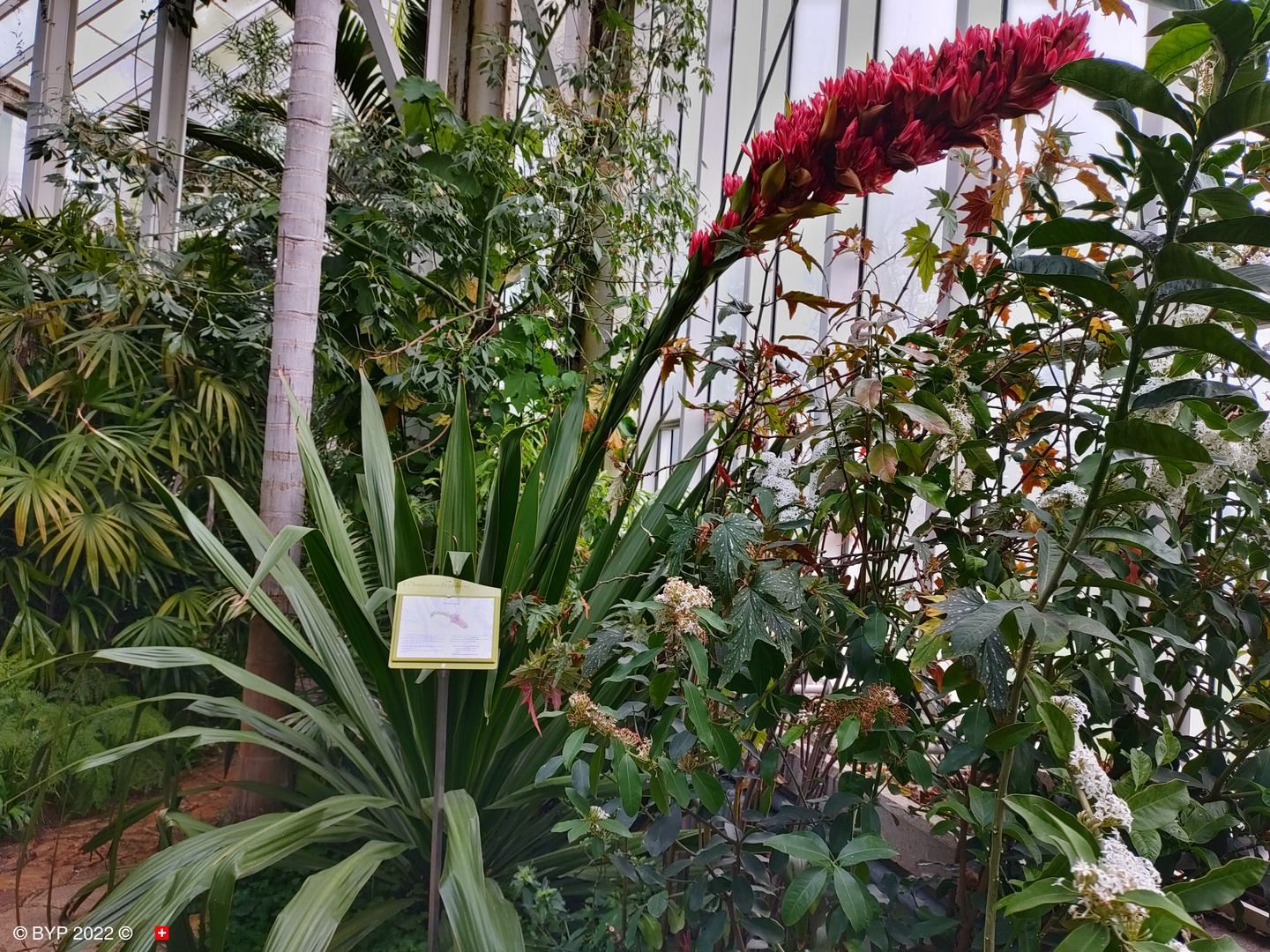GENÈVE JARDDIN BOTANIQUE / BOTANICAL GARDEN
PLANTÉ IL Y A 40 ANS (1983) IL FLEURI POUR LA PREMIÈRE FOIS EN 2022 !
*********************************
PLANTED 40 YEARS AGO (1983) IT WILL FLOWER FOR THE FIRST TIME IN 2022 !
________________________
TEXTE PAR / TEXT BY
JARDIN BOTANIQUE GENEVE
++++++++++++++++++++++
La petite graine semée il y a 40 ans est devenue une plante impressionnante par ses 3,50 mètres de hauteur !
C’est la première fois que ce lys géant fleurit aux Conservatoire et Jardin botaniques de Genève. Aucune plante européenne n’a une si grande inflorescence, ou ensemble de fleurs. Son rouge flamboyant se démarque du vert de ses feuilles.
Famille Doryanthaceae.
Nom du grec « lance » (dory) et « fleur » (anthos).
Originaire de la région du Queensland à l’est de l’Australie, elle est malheureusement menacée dans son habitat naturel des zones côtières du sud-est australien.
Cette espèce a été nommée en l’honneur du premier ministre du Queensland de l’époque, Arthur Hunter Palmer (1819-1898).
Description
Le Doryanthes palmeri est une plante monocarpique, c’est-à-dire que sa rosette ne fleurit qu’une seule fois dans son existence, lorsqu’elle a accumulé assez d’énergie. Après la floraison, elle va dépérir et laisser place à de nouvelles rosettes. Ces dernières prendront vie depuis la même base.
Les fleurs de Doryanthes palmeri sont bisexuées et fécondées par les oiseaux, dans leur environnement naturel. Mais la plante peut aussi s’autoféconder. Sa succession pourra donc se faire soit par semis, soit avec les rejets de la base.
Le Doryanthes palmeri est adapté à la sécheresse ; il exige un sol bien drainé et une exposition ensoleillée à mi-ombragée.
Ce sujet a été semé en 1983 ; il lui aura fallu 40 ans pour fleurir !
The small seed sown 40 years ago has grown into an impressive plant with a height of 3.50 metres !
This is the first time that this giant lily has bloomed at the Geneva Conservatory and Botanical Gardens. No other European plant has such a large inflorescence, or set of flowers. Its flamboyant red colour stands out against the green of its leaves.
Family Doryanthaceae.
Name from the Greek for "spear" (dory) and "flower" (anthos).
Native to the Queensland region of eastern Australia, it is unfortunately endangered in its natural habitat of the coastal areas of south-eastern Australia.
This species was named after the then Premier of Queensland, Arthur Hunter Palmer (1819-1898).
Description
Doryanthes palmeri is a monocarpic plant, i.e. its rosette flowers only once in its life, when it has accumulated enough energy. After flowering, it will die back and make way for new rosettes. These will grow from the same base.
The flowers of Doryanthes palmeri are bisexual and are fertilised by birds in their natural environment. But the plant can also pollinate itself. Its succession can therefore be done either by sowing or with the offshoots from the base.
Doryanthes palmeri is adapted to drought; it requires well-drained soil and a sunny to semi-shaded position.
This plant was sown in 1983 and took 40 years to flower
!










Commentaire 0
Supprimer le commentaire
Effacer commentaire et réponses